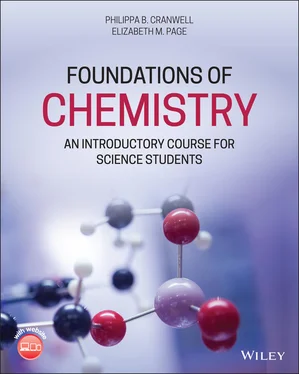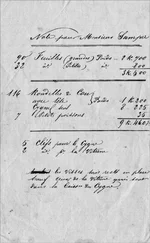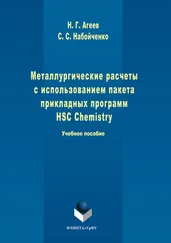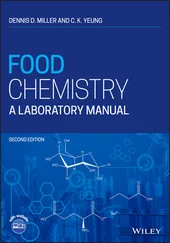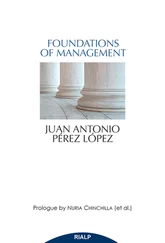11 Chapter 12Table 12.1 Some commonly encountered homologous series and examples. Note: R ...Table 12.2 The names and structures of the first five hydrocarbon chains.Table 12.3 The name, structural formulae, and prefixes of the first 10 hydroc...Table 12.4 The hierarchy of some commonly encountered functional groups.
12 Chapter 14Table 14.1 A comparison of boiling points between alkanes and the correspondi...
13 Chapter 19Table 19.1 Characteristic absorptions of some functional groups commonly enco...Table 19.2 The chemical shifts for different 1H environments.Table 19.3 A table summarising the most commonly encountered peak (resonance)...
1 Chapter 0 Figure 0.1 The shape of a water molecule, H 2O. Figure 0.2 (a) 25 cm 3measuring cylinder; (b) 25 cm 3pipette; (c) 50 cm 3bur... Figure 0.3 (a) Cube of volume 1 m 3. (b) Flask of volume 1 L.(c) Cube of ...
2 Chapter 1 Figure 1.1 Simplified structure of the atom (not to scale). Figure 1.2 (a) General representation of mass number and atomic number for t... Figure 1.3 The standard modern form of the periodic table. Source: Universit... Figure 1.4 The energy levels (EL) in an atom. The integers represent the pri... Figure 1.5 The structure of neon. Figure 1.6 (a) The 1s orbital; (b) the 2s orbital; (c) the 3s orbital. Figure 1.7 (a) The 2p xorbital; (b) the 2p yorbital; (c) the 2p zorbital. Figure 1.8 (a) The d xyorbital; (b) the d xzorbital; (c) the d yzorbital; (d... Figure 1.9 The relative energies of the orbitals in an atom. Relative energi... Figure 1.10 Electron arrangements in lithium, oxygen, and chlorine. Outer sh...
3 Chapter 2 Figure 2.1 (a) Eight hydrogen atoms; (b) four hydrogen molecules. Figure 2.2 Bonding in sodium metal. Figure 2.3 Addition of an electron to a fluorine atom to generate a fluoride... Figure 2.4 Arrangement of electrons in (a) a sodium atom; (b) a sodium ion.... Figure 2.5 Bonding in NaCl. Note: only outer‐shell electrons are shown for c... Figure 2.6 The sodium chloride lattice. Source: Based on https://www.chemgui... Figure 2.7 Salt, sodium chloride. Figure 2.8 (a) Formation of a single bond in hydrogen, H 2; (b) an alternativ... Figure 2.9 (a) Formation of a double bond in oxygen, O 2; (b) an alternative ... Figure 2.10 (a) Bonding in the ammonium ion, NH 4 +. Note: only outer‐shell el... Figure 2.11 (a) Bonding in diamond; (b) bonding in silicon dioxide; (c) two‐... Figure 2.12 Dot‐and‐cross diagram for beryllium chloride, BeCl 2showing two ... Figure 2.13 A linear centre in carbon dioxide, CO 2. Figure 2.14 (a) Bonding in boron trichloride, BCl 3with a trigonal planar ce... Figure 2.15 (a) Bonding in C 2H 4, ethene with trigonal planar centre; (b) sho... Figure 2.16 (a) Bonding angles in a tetrahedral bonding centre; (b) bonding ... Figure 2.17 (a) Bonding angles in a trigonal bipyramidal molecule; (b) phosp... Figure 2.18 (a) Bonding angles in an octahedral molecule; (b) sulfur hexaflu... Figure 2.19 Common shapes of simple covalent molecules. Figure 2.20 Periodic table showing Pauling electronegativity of most of the ... Figure 2.21 (a) A pair of electrons shared evenly between two atoms with the... Figure 2.22 (a) A pair of electrons shared unevenly between two atoms with d... Figure 2.23 Polar covalent bonds in (a) hydrogen chloride, HCl and (b) carbo... Figure 2.24 Hydrogen chloride molecule showing the charge separation and dir... Figure 2.25 Chloromethane, CH 3Cl, is a polar molecule. Figure 2.26 Carbon dioxide has polar bonds but no overall dipole moment. Figure 2.27 (a) Overall molecular dipole in fluoromethane; (b) overall molec... Figure 2.28 Comparison of inter‐ and intramolecular forces. Figure 2.29 Permanent dipoles in the hydrogen chloride molecule and resultan... Figure 2.30 (a) Chlorine molecule with even distribution of charge; (b) Chlo... Figure 2.31 (a) Helium atom ( Z = 2) showing even distribution of electrons; ... Figure 2.32 (a) Formation of a hydrogen bond between two molecules of water ... Figure 2.33 (a) Hydrogen bonding between two ethanol, C 2H 5OH, molecules; (b)...
4 Chapter 3 Figure 3.1 The same number of different types of fruit have different masses...Figure 3.2 A solute and a solvent are combined to form a solution.
5 Chapter 4Figure 4.1 Molecules of water in the solid, liquid, and gas states.Figure 4.2 The change in state from solid to liquid and then to gas for wate...Figure 4.3 Metallic bonding in sodium.Figure 4.4 Ionic lattices. (a) Sodium chloride, NaCl.(b) Calcium fluorid...Figure 4.5 Space‐filling diagram for sodium chloride showing space occupied ...Figure 4.6 (a) The structure of graphite.(b) The structure of diamond. (...Figure 4.7 Movement of molecules from a liquid in a closed container. (a) Th...Figure 4.8 Comparison of boiling points in ( Z) ‐ and ( E )‐dichloroethene.Figure 4.9 Comparison of boiling points of n ‐hexane and 2,2‐dimethylbutane....Figure 4.10 Hydrogen bonding between water molecules.Figure 4.11 Group 6 (16) hydrides.Figure 4.12 Boiling points of hydrides of Groups 4 (14), 5 (15), 6 (16), and...Figure 4.13 Ice crystals.Figure 4.14 Coastal regions are kept cool by the high heat capacity of water...Figure 4.15 Hydrogen bonding between base pairs in DNA.Figure 4.16 Boyle's law states that the volume of a gas is inversely proport...Figure 4.17 Charles's law states that as the temperature of a fixed number o...Figure 4.18 The large cube has a volume of 1 m 3. The sides of the small cube...Figure 4.19 The Celsius and Kelvin temperature scales.
6 Chapter 5Figure 5.1 Electron arrangements in a Mg atom and Mg 2+ion.Figure 5.2 Electron arrangements in an O atom and O 2−ion.Figure 5.3 (a) The international pictogram for an oxidising agent; (b) safet...
7 Chapter 6Figure 6.1 Fireworks release energy in the form of heat, light, and sound....Figure 6.2 Energy flow in exothermic and endothermic reactions.Figure 6.3 Reaction pathways for (a) an exothermic reaction; (b) an endother...Figure 6.4 A polystyrene cup and lid used as a calorimeter.Figure 6.5 Plot of temperature against time for a simple calorimeter, showin...Figure 6.6 Sodium chloride lattice dissolving in water.Figure 6.7 A simple flame calorimeter.Figure 6.8 A bomb calorimeter.Figure 6.9 Graphical representation of Hess's law. The enthalpy change for d...Figure 6.10 Hess's law cycle to determine the enthalpy of formation of C 2H 5O...Figure 6.11 Representation of the reaction between oxygen (1 mole) and hydro...Figure 6.12 Reaction pathway showing the energy of intermediates in the tran...Figure 6.13 General energy triangle used to calculate lattice enthalpy for a...Figure 6.14 General Born–Haber diagram for the calculation of lattice enthal...Figure 6.15 A Hess's law cycle to calculate the lattice enthalpy of formatio...Figure 6.16 Born–Haber diagram for calculating the lattice enthalpy of forma...Figure 6.17 Born–Haber cycle for calculating the lattice enthalpy of formati...Figure 6.18 The charge density on a Li +ion is greater than that on a larger...Figure 6.19 (a) Lattice enthalpy of formation for Group 1 chlorides; (b) lat...Figure 6.20 Polarisation of an anion (−ve) by a small, highly charged cation...Figure 6.21 Sherbet Fountain is composed of citric acid and sodium hydrogen ...Figure 6.22 A student bedroom tends to a maximum state of disorder and maxim...
8 Chapter 7Figure 7.1 The rates of the forward and backward reactions are equal once th...Figure 7.2 Plot of concentrations of reactants (A and B) and products (C and...Figure 7.3 Effect of changing the external pressure on the dinitrogen tetrox...Figure 7.4 The N 2O 4⇌ 2NO 2equilibrium at different temperatures. An increas...Figure 7.5 The pH scale showing the typical colour of universal indicator in...Figure 7.6 Using a pH meter to measure hydrogen ion concentration.Figure 7.7 Titration apparatus.Figure 7.8 Plot of pH change in the titration of a strong acid against a str...Figure 7.9 Colour changes of some common indicators.Figure 7.10 Plot of pH against volume of acid in a titration of a strong aci...Figure 7.11 Plot of pH against volume of acid in a titration of a weak acid ...Figure 7.12 Plot of pH against volume of base in a titration of a strong aci...Figure 7.13 Plot of pH against volume of acid in a titration of a weak acid ...
Читать дальше
